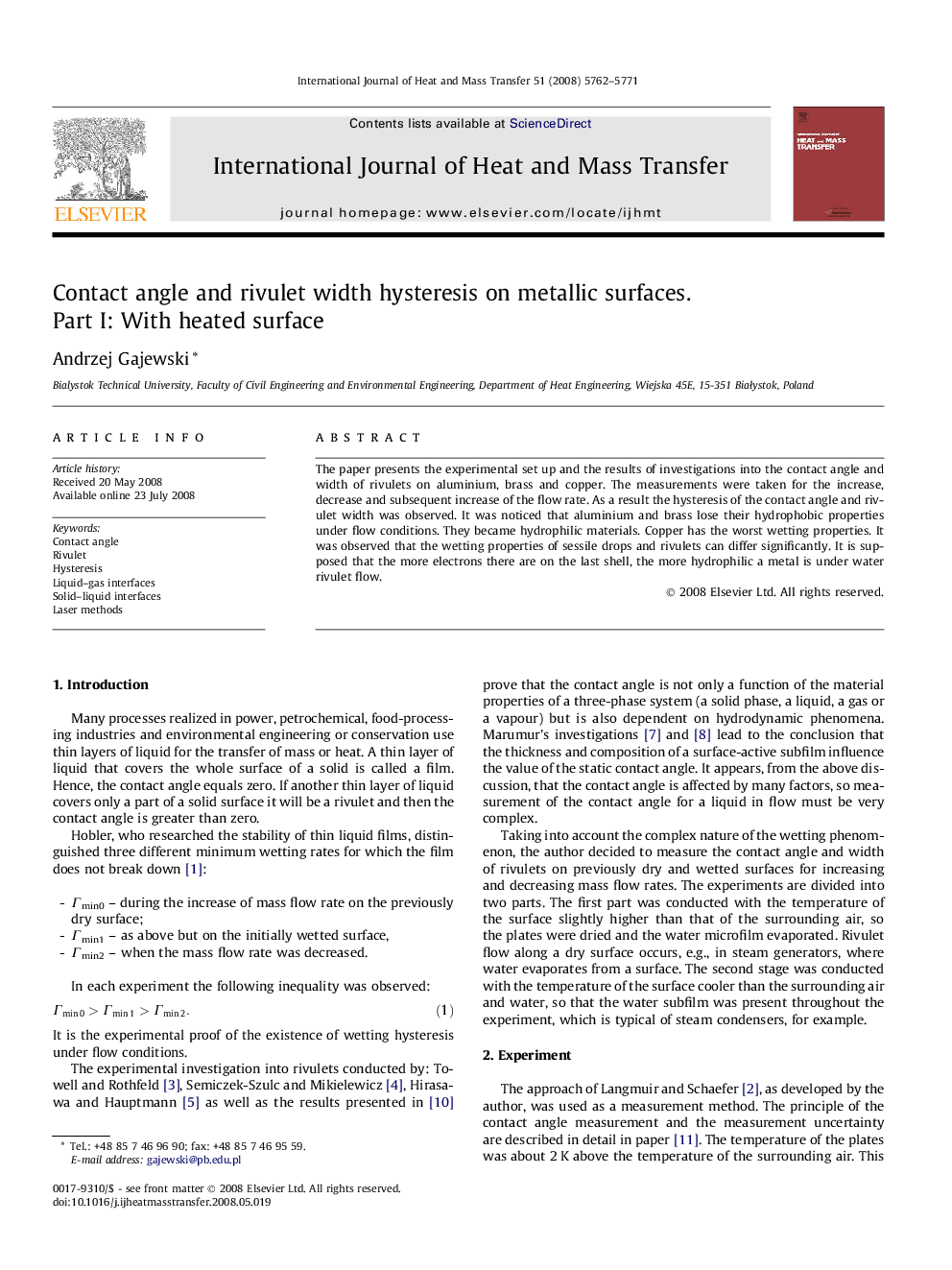| Article ID | Journal | Published Year | Pages | File Type |
|---|---|---|---|---|
| 660015 | International Journal of Heat and Mass Transfer | 2008 | 10 Pages |
Abstract
The paper presents the experimental set up and the results of investigations into the contact angle and width of rivulets on aluminium, brass and copper. The measurements were taken for the increase, decrease and subsequent increase of the flow rate. As a result the hysteresis of the contact angle and rivulet width was observed. It was noticed that aluminium and brass lose their hydrophobic properties under flow conditions. They became hydrophilic materials. Copper has the worst wetting properties. It was observed that the wetting properties of sessile drops and rivulets can differ significantly. It is supposed that the more electrons there are on the last shell, the more hydrophilic a metal is under water rivulet flow.
Related Topics
Physical Sciences and Engineering
Chemical Engineering
Fluid Flow and Transfer Processes
Authors
Andrzej Gajewski,
